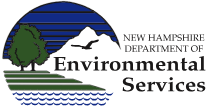Climate Pollution Reduction Grants
New Hampshire has been granted federal funding to update New Hampshire’s Climate Action Plan.
New Hampshire has been awarded a Climate Pollution Reduction Grant (CPRG) from the U.S. Environmental Protection Agency (EPA) to update the state’s climate action plan to reduce emissions of greenhouse gases. EPA is administering this CPRG Program as part of the Inflation Reduction Act of 2022. The CPRG program has two phases: planning and implementation.
The goals of the New Hampshire CPRG Program are to:
- Reduce greenhouse gas emissions while supporting the creation of good jobs and lowering energy costs for families.
- Empower community-driven solutions in neighborhoods overburdened from pollution and impacts of climate change by directly seeking input from those communities. Under Justice40 guidance, the program’s goal is to have 40% of overall benefits flow to these communities.
- Deliver cleaner air by reducing harmful air pollution in places where people live, work, play and go to school.
Planning
In the current planning phase, NHDES has used awarded funds from EPA for development of a Priority Climate Action Plan (PCAP) and will continue to use funds to develop a Comprehensive Climate Action Plan (CCAP). The PCAP was submitted to EPA on March 1, 2024, and focused on identification of actionable measures to reduce greenhouse gas emissions and an analysis of some benefits.
Completion of this initial plan is a necessary prerequisite to allow our state to compete for $4.6 billion in implementation grants described below. The CCAP is due on August 15, 2025, and will build upon the information in the PCAP but will include more in-depth analysis of benefits, projections of future reductions and more detailed study of future implementation options.
Implementation
In the second phase of the program, entities identified in the PCAP may apply for implementation grants. NHDES submitted an implementation grant application on April 1, 2024. There will be a total of $4.6 billion available nationally for implementation, and grant applications will be evaluated by EPA on a competitive basis. Learn more on the EPA CPRG Implementation Grants website in the General Competition Notice of Funding Opportunity.
Engagement
The EPA has made clear that meaningful community engagement is essential for this planning process and accessing funding for the implementation grants that follow (i.e., support for local ideas, policies and programs to reduce pollution and build more equitable and resilient communities). Learn more on the EPA website.
Meaningful Community Engagement
Each climate action plan requires meaningful community engagement. The design and initial efforts to identify climate action priorities must actively involve the participation of people who live in communities that experience a disproportionate burden of environmental hazards that affect their quality of life – linked to the following sectors. There is much to talk and engage about across New Hampshire! See EPA Technical Assistance for more information.
- Transportation.
- Electricity generation and/or use.
- Natural and working lands.
- Industry.
- Agriculture.
- Commercial and residential buildings.
- Waste and materials management.
- Wastewater.
Process for Engagement
- Assessment Phase: Clarifying engagement and workplan goals while identifying partners, interested parties, their interests and resources.
- Design Phase: Work with and engage interested parties and partners to plan the engagement process.
- Engagement Phase: Begin to implement the engagement plan by holding community conversations across New Hampshire with a mix of stakeholders, including and emphasizing people who are from communities most affected by greenhouse gases and air pollution in New Hampshire. The focus comes from guidance put forth by the EPA and Justice 40.
Community engagement activities focused on building relationships and opportunities for people to voice their ideas were held between October 2023 and February 2024 to inform the drafting of the PCAP. A schedule of additional engagement events to inform the drafting of the CCAP is forthcoming.
Updates
If you are interested in joining our mailing list for updates, please fill out your information here in this notification sign-up form.
New Hampshire’s Priority Climate Action Plan (PCAP) was submitted to EPA on March 1, 2024.
In addition to the PCAP, please refer to our grant workplan and the New Hampshire Climate Action Plan (2009), which will help to inform your thinking in preparation for sharing your ideas with us at the appropriate time.
Questions regarding New Hampshire’s CPRG work can be addressed to cprg@des.nh.gov.
In-person events
February 12, 2024 – Concord
February 1, 2024 – Manchester
January 31, 2024 – Berlin
January 25, 2024 – Winchester
January 25, 2024 – Claremont
January 18, 2024 – Nashua
January 17, 2024 – Hampton
Online Cross-Sector Stakeholder Conversations
February 8, 2024 – Conversation #3
January 11, 2024 – Conversation #2
November 30, 2023 – Conversation #1
Online Community Conversations – Statewide
January 24, 2024 – Conversation #3
January 9, 2024 – Conversation #2
December 6, 2023 – Conversation #1




